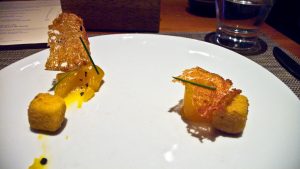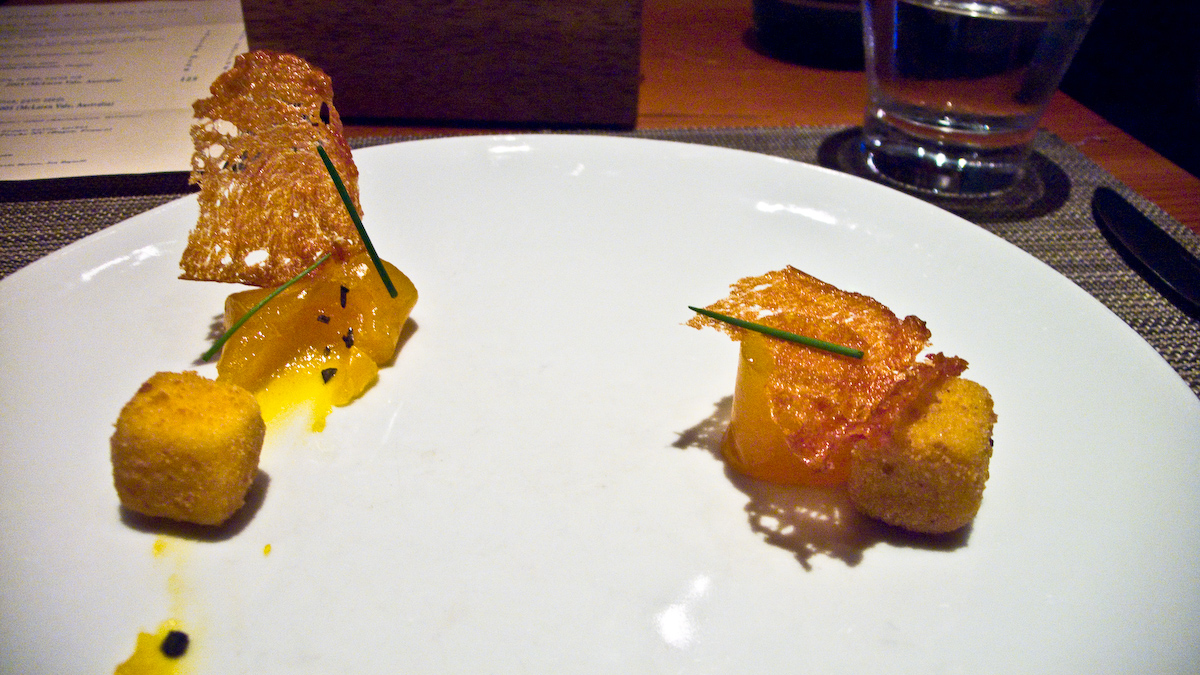
(https://www.flickr.com/photos/edsel_/2616056659/) CC-by-sa-2.0 (https://creativecommons.org/licenses/by-sa/2.0/)
When you hear the words “molecular gastronomy,” you probably think of something like the picture to the left, where it’s all about weird combinations and fancy plating.
Molecular gastronomy is, in reality, the science of investigating the physical and chemical changes in ingredients when they are cooked. Or, in other words, the science behind cooking. While it is often used to make weird things, like the pictured take on eggs Benedict, there’s much more to it than just words you can’t pronounce and drizzles of unidentifiable substances among tiny pieces of food.
Much of molecular gastronomy prior to the 1980s was in the form of cooking tips that had to do with the science of ingredients, but they weren’t necessarily understood or interpreted as such. The father of molecular gastronomy, Frenchman Herve This, began his inquiries after attempting to make a souffle, but ignoring the instructions in the recipe that said to only add two eggs at a time. When his souffle failed, he applied his degree in physical chemistry to studying cooking, so he could understand the science behind ingredients and recipes.
Molecular gastronomy can be used for things like frying the perfect french fry or creating an appetizer that serves to cleanse the palate to make the rest of the meal more enjoyable. And yes, it can also involve oddities like spherification of foods, but it can also teach us how to make a better souffle!
You can learn more about molecular gastronomy here, which also includes a nearly hour-long Tech Stuff podcast on molecular gastronomy!
Follow us online: